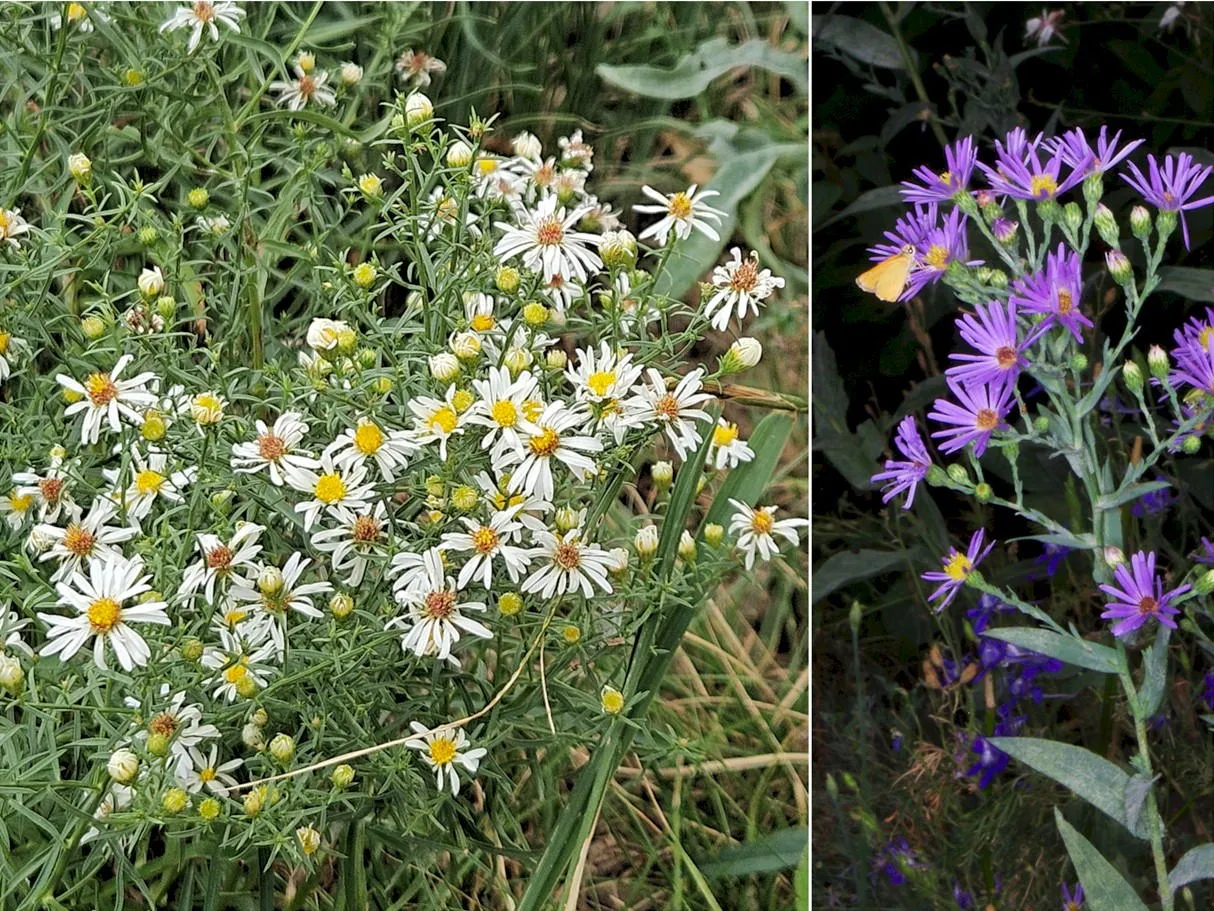By Tom Schweich
Along the trails of every Golden open space look for a low (18 inches) shrub with white aster-like flowers. Feel the stems; if they are smooth, you have found the Smooth White Aster — Symphyotrichum porteri (A. Gray) G.L. Nesom. (If the stems are hairy, you may have found either White Prairie Aster or White Heath Aster.)
A reason to pay attention to Smooth White Aster is its limited distribution, right along the Front Range of Colorado, with just a few sneaking over the border north into Wyoming, and a few more sneaking south over the border into New Mexico.
Our plant was first recognized by Thomas Porter in the Synopsis of the Flora of Colorado, which he wrote with John M. Coulter in 1874, though he put the name Aster ericoides var. strictus on it. Asa Gray, MD, the most influential nineteenth-century North American botanist, while analyzing all the sunflower family for his forthcoming (1884) Syntopical Flora of North America, recognized our plant as a distinct species and named it Aster porteri, in honor of Thomas Porter.
The definition and recognition of what is an Aster and what is not has long been confusing. Even Dr. Gray struggled with Aster. Late in his life, he wrote (quoted from Weakley, 2004, see below):
I am half dead with Aster. … Here I work and work, but make no headway at all. I can’t tell what are species and how to define any of them … I was never so boggled … If you hear of my breaking down utterly, and being sent to an asylum, you may lay it to Aster, which is a slow and fatal poison …
Now I don’t feel so bad when I struggle to identify asters and aster-like flowers.
More recently, DNA studies showed that most of the North American “asters” form a distinct group that is separate from the Eurasian asters. Guy Nesom (1994) selected the name Symphyotrichum to apply to one group of North American “asters” including our plant: Symphyotrichum porteri (A. Gray) G.L. Nesom. The genus name Symphyotrichum comes from the Greek word "symph" which means come together and "trich" or hair in reference to the hairy looking flower anthers. Even though the scientific name has changed, we still refer to them with their common name as a type of Aster.
Smooth White Aster is adventive in Golden gardens, and I have several that have found their own way into mine.
Since we are talking about “smooth asters,” we should mention the Smooth Blue Aster — Symphyotrichum laeve (L.) Á. Löve & D. Löve var. geyeri (A. Gray) G.L. Nesom that you may find in the higher parts of Golden, such as Tin Cup Ridge, Apex Park, and the lower slopes of Lookout Mountain.
References:
Weakley, Alan S. 2004 March-April. The Curious Case of the Disappearing Asters. North Carolina Botanical Garden Newsletter, Chapel Hill, North Carolina.









